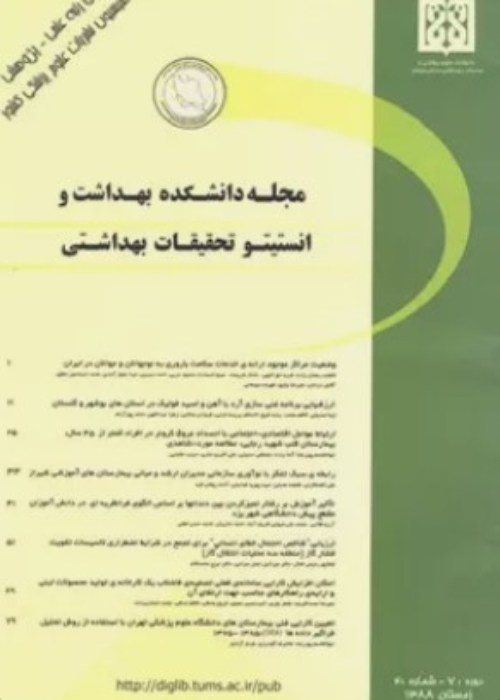EPIDEMILOGICAL CHARACTERISTICS OF KALA-AZAR IN HOSPITALIZED PATIENTS IN ARDEBIL PROVINCE
Author(s):
Abstract:
This study is a retrospective review of the epidemiology of kala-azar, using cases reported to health facilities in Ardebil province over a period of 5 years: from the beginning of 1997 until the end of 2001.The total number of cases was 602, but as the assessment was only possible in hospitalized patients, the questionnaires were completed for 293 cases with detailed records in 5 hospitals (3 in Ardebil and two in Meshkin-shahr and Germi). Another 76 cases were also excluded (due to incomplete records) and in the end 217 questionnaires were analyzed by the Epi-info 2002 package.Compared to the total number of cases (1051) reported in a similar study over the years 1985-90, the reduction in total number of cases (602) may be due to reduced incidence rate in Meshkin-Shahr and/or underreporting. Although the total number is down, the number of new cases in Germi and Bilehsavar districts has increased. In our study the overall male to female ratio was 1.4 to 1; this ratio was 1.5 to 1 in hospitalized patients. 74% (160) of cases were under 2 years of age and 93% (201) under 5. Only 1.8% (4) of patients were over the age of 10 years. Though the majority of the patients were seen in Ardabil city, most had been referred from Germi district. 87.5% were village dwellers, mostly referred on cold months of the year; the number of referrals was lowest during summer. The most frequently used diagnostic test (especially in recent years) was DAT, positive in 77% of tested cases (titers/1600). We also performed BMA on 30 patients, of which 87% (26) were positive. 58%) of the subjects had been diagnosed in about a month after the disease onset and 93% within 4 months. The most common clinical features were anemia, fever, anorexia, splenomegaly (all present in >90% of cases); other manifestations were malnutrition, cough, hepatomegaly, diarrhea, vomiting, Iymphadenopathy, hemorrhage, jaundice, edema and ascitis. In 6 cases (3%) the chief complaint was febrile convulsion. The most common laboratory findings were anemia (mean Hb - 8.96 mg/dl), elevated ESR (highest level being 140mm/l hour), thrombocytopenia and neutropenia. Liver enzymes were elevated in one third of the patients. 96% of the cases treated with Glucantime; the remaining 4% were relapse cases or treatment failures and had been given Amphotricin-B. 95.8% (211 cases) had been discharged in good general condition; 3% (6) had died. The exact causes of death were not mentioned in hospital records.According to these findings, Kala-azar is a major health problem in Ardebil province, especially within the rural population and specifically in Germi and Bilehsavar districts. It requires more intense control and more medical facilities alongside education programs for health workers and general population.
Language:
Persian
Published:
Scientific Journal of School of Public Health and Institute of Public Health Research, Volume:2 Issue: 2, 2004
Pages:
11 to 24
magiran.com/p481033
دانلود و مطالعه متن این مقاله با یکی از روشهای زیر امکان پذیر است:
اشتراک شخصی
با عضویت و پرداخت آنلاین حق اشتراک یکساله به مبلغ 1,390,000ريال میتوانید 70 عنوان مطلب دانلود کنید!
اشتراک سازمانی
به کتابخانه دانشگاه یا محل کار خود پیشنهاد کنید تا اشتراک سازمانی این پایگاه را برای دسترسی نامحدود همه کاربران به متن مطالب تهیه نمایند!
توجه!
- حق عضویت دریافتی صرف حمایت از نشریات عضو و نگهداری، تکمیل و توسعه مگیران میشود.
- پرداخت حق اشتراک و دانلود مقالات اجازه بازنشر آن در سایر رسانههای چاپی و دیجیتال را به کاربر نمیدهد.
In order to view content subscription is required
Personal subscription
Subscribe magiran.com for 70 € euros via PayPal and download 70 articles during a year.
Organization subscription
Please contact us to subscribe your university or library for unlimited access!



